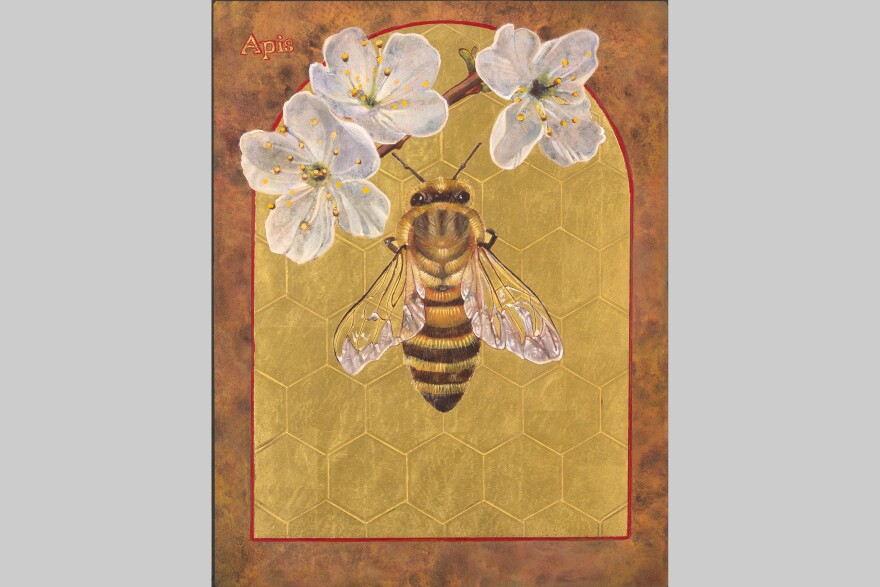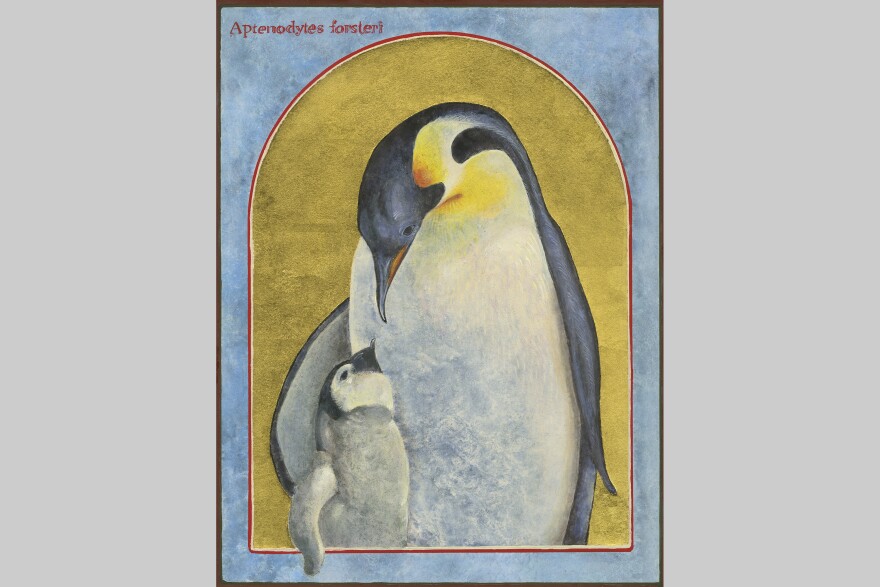Artist Angela Manno has been studying and creating traditional religious icons since the late 1990s, employing the same methods and materials used by masters of the form for centuries.
“All of the materials are as close to their natural state as possible,” Manno said. “I use pigments made of ground up stone, and earth ochres, mixed with an emulsion of egg yolk, white distilled vinegar and water."
Traditionally, icons are of a sacred image, like Jesus, Mary or the saints, and used specifically for religious devotion, as a way to give glory to God.
For her latest series of works, “Contemporary Icons of Threatened and Endangered Species,” Manno replaces the saints with images of threatened and endangered animals, insects and plants. An exhibit at Yale University is featuring Manno's work to bring attention to threatened species.
“So that I can include the rest of the natural world into the icons. So they’re done in the same liturgical fashion, and with the same materials, but different imagery,” Manno said.

The icons — egg tempera and gold leaf on poplar wood — have all of the familiar trappings of traditional religious icons, with images nestled within painted, Byzantine-style windows. And while images of Orangutans and Emperor Penguins replace the traditional images of Jesus, there is a dignity and piousness to the animal images reminiscent of the traditional icons.
“It’s not about venerating them, as much as it is acknowledging that they are also part of the [biblical phrase] “imago Dei” [in English, “image of God”]," Manno said. “It’s not just humans, and I think that is part of our ecological problems. I’m really trying to convey the beauty of these creatures, and appeal to people to take care of them. They’re unrepeatable.”
Yale Institute of Sacred Music has chosen 12 of these icons for the exhibit “Sacred Biodiversity: Icons of Threatened and Endangered Species” running through May 8.




